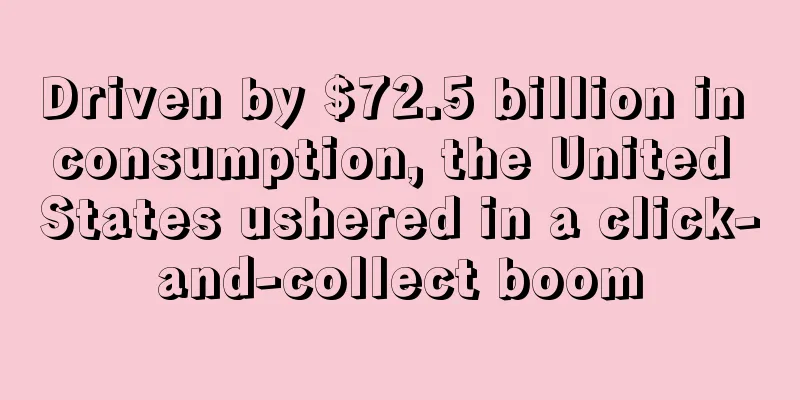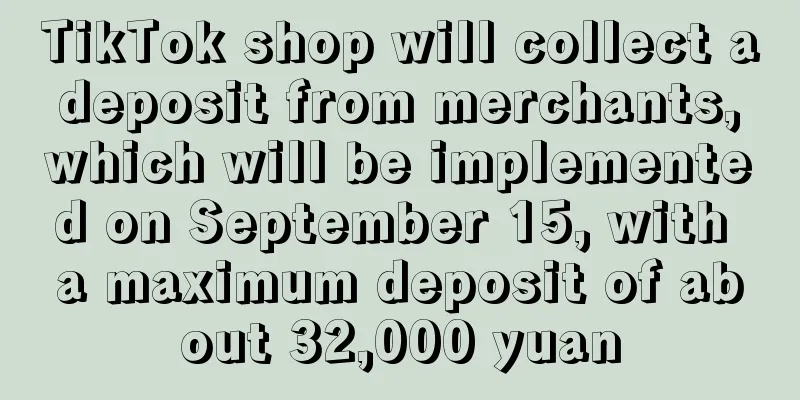Driven by $72.5 billion in consumption, the United States ushered in a click-and-collect boom

|
In 2020, U.S. shoppers spent $72.46 billion through click and collect (delivery method), accounting for 9.1% of all e-commerce sales. This year, this figure is expected to increase by 9.9% to $83.47 billion.
Relevant data shows that seven major click-and-collect multi-channel retailers account for 64.0% of click-and-collect sales in the United States , such as Walmart, Home Depot, Best Buy, Target, Lowe's, Macy's and Nordstrom, with a total click-and-collect sales of more than $46 billion.
These seven companies are representative of the companies that have taken advantage of the surge in sales from click and collect interest. Among them, Target's sales increased by 734% in the second quarter of 2020, and then maintained a year-on-year growth of 500% in the next quarter. Despite the large-scale shift to curbside service, Target's in-store click and collect also increased by more than 60% in the second and third quarters of 2020, and increased by more than 50% in the third quarter.
As consumers got used to these options, momentum accelerated: In a March 2021 earnings call, Target reported that Drive Up sales had grown more than 600% for all of 2020, and in-store pickup had grown more than 70%.
Home Depot reported more than 60% digital sales in its second and third quarters of 2020, a figure that was heavily influenced by in-store pickup. Lowe’s reported a nearly identical ratio of delivery to in-store pickup for the year, as well as 111% year-over-year e-commerce sales growth in 2020. Best Buy recently reported that 48% of its online sales were picked up in stores in 2020.
Taken together, these data points paint a vivid picture. For these major retailers, click and collect accounts for more than a third of all their e-commerce sales. Among the “top five” click and collect retailers, returning customers account for 41.9% of their e-commerce sales and more than half of their e-commerce growth last year.
Click-and-collect has proven to be a driver of e-commerce growth for large U.S. retailers in 2020, including The Home Depot (73.4% of e-commerce growth), Lowe's (72.1%), and Best Buy (44.8%).
Home improvement retailers were the easiest to click and collect, given the size and weight of many products, and the fact that buyers, including small businesses, contractors and repair service providers, often need to purchase these products immediately. Big-package retailers followed home improvement retailers, followed by Macy’s and Nordstrom, which had the fewest changes to click and collect.
The lower figures for department stores can be partly attributed to the complete closure of certain stores during the COVID-19 pandemic, which ruled out click and collect and forced customers into traditional e-commerce delivery methods. In addition, demand for apparel was lower last year compared to other product categories. However, the lower click and collect rates for department stores can be attributed to consumers who still prefer home delivery over purchasing lower priority, less time-sensitive items such as apparel and accessories. USA Click to Collect Consumption |
<<: Target pledges $2 billion to support Black-owned businesses
>>: Indonesian platform Blibli holds Ramadan shopping festival, offers two-hour delivery service
Recommend
What is API? API Review, Features
API stands for Application Programming Interface....
With over 10,000 reviews, is a popular product in a small category also an infringement?
Recently, I found a hot-selling product while bro...
U.S. holiday sales of $887 billion exceeded expectations, but challenges remain
Despite a severe supply chain crisis and the impa...
Squarespace, a US website building platform, completes $300 million in financing, with a valuation of up to $10 billion
According to a report by techcrunch the day befor...
Great news! Six departments issued a notice to further expand the cross-border e-commerce retail import pilot
According to the official website of the Ministry...
What is hzbu? hzbu Review, Features
hzbu is committed to providing shoppers with origi...
Net profit exceeds 1 billion? This track is popular
Recently, there have been various news about Tian...
Shopee sellers, please note! Using the product video function to place orders faster
Sellers can optimize products with the potential ...
The best solution for Chinese brands to go global! AliExpress’s “10 billion yuan subsidy” opens up a new cross-border track
A large number of mobile phone, digital, consumer...
What is Eight Star Logistics? Eight Star Logistics Review, Features
Baxing Logistics (Shenzhen Baxing International L...
DJI executives start their own business, with monthly sales of a single product reaching 4 million US dollars!
The courtyard track has another big hit. In the p...
Amazon limits sales of Covid-19 test kits!
Recently, foreign media reported that Amazon has ...
The 2022 Shopee Cross-border Sellers Conference concluded successfully, kicking off the second half of the year's peak season promotion
July 28, 2022, Shenzhen - Recently, the leading e...
Concentrate on IPO! Many big sellers are facing the "cold"
Although cross-border e-commerce sellers have exp...
What is FreshToHome? FreshToHome Review, Features
FreshToHome is an online seafood delivery service ...









